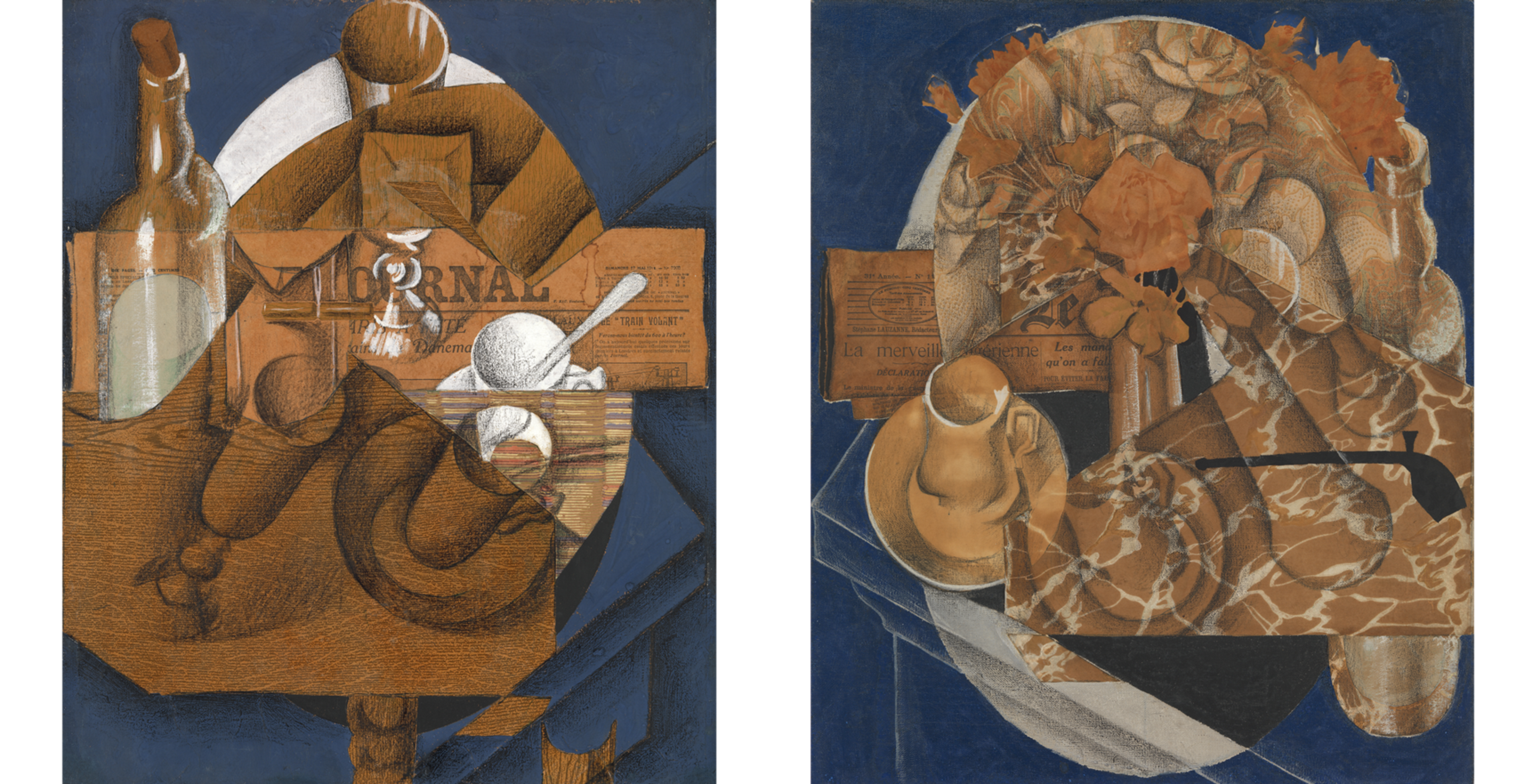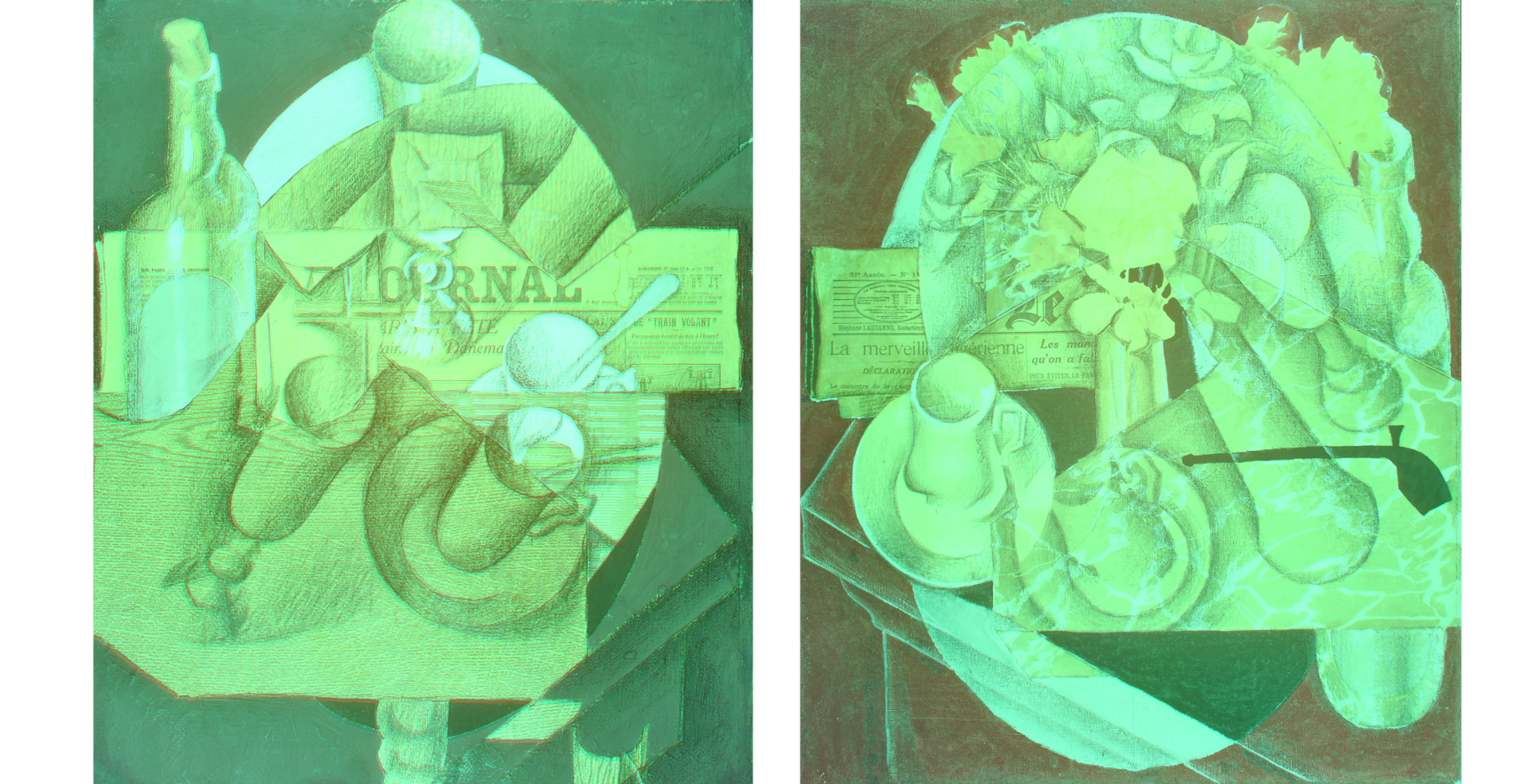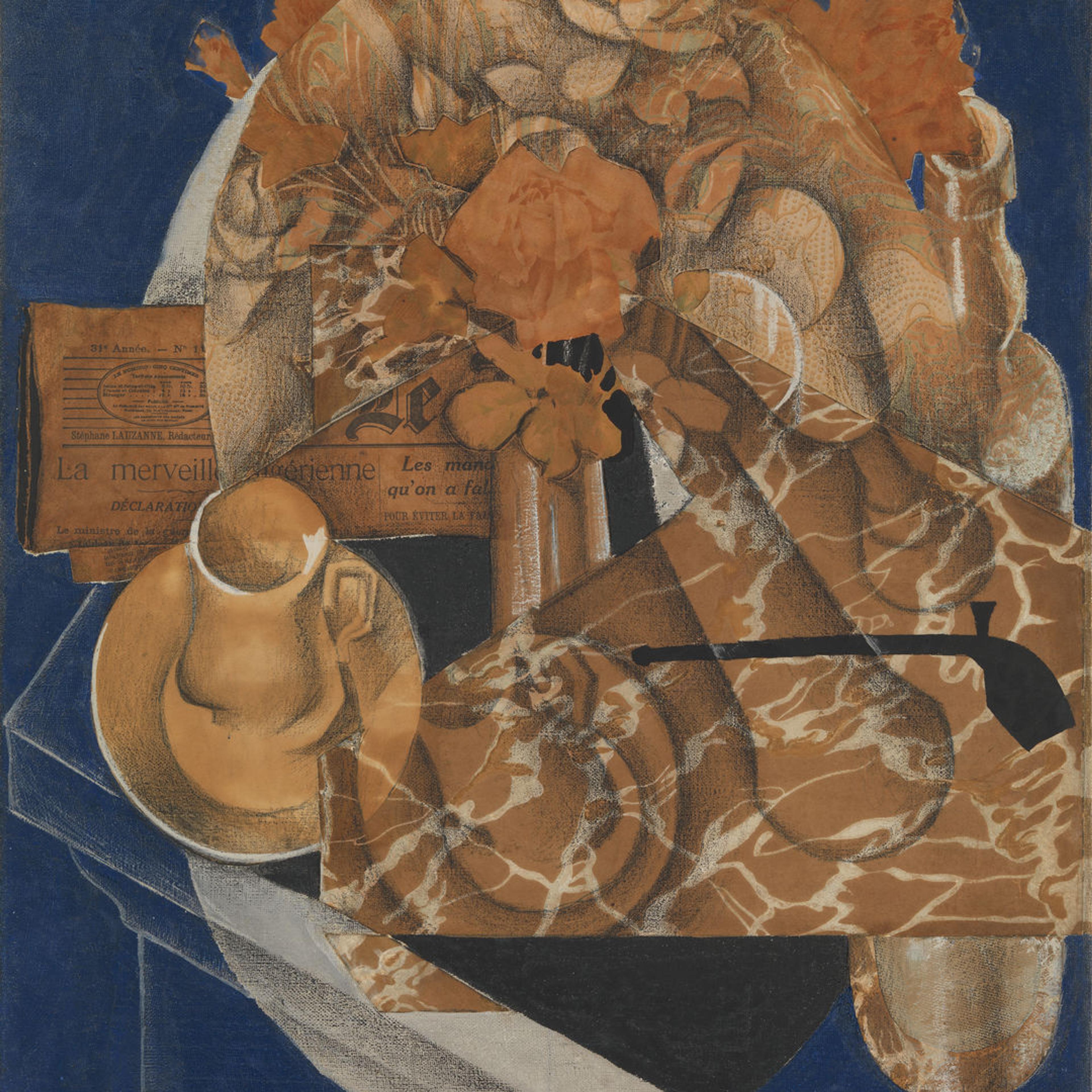
Juan Gris (1887–1927), Cup, Glasses, and Bottle (Le Journal), 1914. Conté crayon, gouache, oil, cut-and-pasted newspaper, white laid paper, printed wallpaper (three types), selectively varnished; adhered overall on to a sheet of newspaper, mounted to primed canvas, 21 5/8 x 18 1/8 in. (54.9 x 46 cm). Promised Gift from the Leonard A. Lauder Cubist Collection
(at right) Juan Gris (1887–1927), Flowers, 1914. Conté crayon, gouache, oil, wax crayon, cut-and-pasted printed wallpapers (two types), printed white wove paper, newspaper, white laid and wove papers on primed canvas; subsequently mounted to a honeycomb panel, 21 5/8 x 18 1/8 in. (54.9 × 46 cm). Promised Gift from the Leonard A. Lauder Cubist Collection
To the untrained eye, two collages by Juan Gris in the Leonard A. Lauder Cubist Collection—Cup, Glasses, and Bottle (Le Journal) and Flowers—appear to have similar painted blue backgrounds. In fact, Gris used different materials for each.
The background of Cup, Glasses, and Bottle (Le Journal) is painted with a gouache that Gris would have purchased in tube form from an art supply store. This opaque watercolor, primarily composed of gum and pigment, was applied in thick layers that trapped small air bubbles within as it dried to a dense, matte surface (FIG. 1). The paint Gris used in Flowers, on the other hand, has a different appearance when magnified and is likely oil.
False color infrared reflectography (FCIR) was used by conservators to learn more about the pigments in these two paints. FCIR is a non-destructive method, meaning that no samples are taken. Instead, IR wavelengths of light, undetectable to the human eye, are captured on special cameras. In tandem with a computer, light wavelengths are analyzed, and this information allows conservators and scientists to better understand the materials being studied. When Cup, Glasses, and Bottle (Le Journal) was examined with FCIR, its background remained blue (FIG. 2). However, FCIR examination of Flowers produced a distinctive red hue (FIG. 3), which is indicative of ultramarine pigment. Traditionally made by grinding the semi-precious stone lapis lazuli, ultramarine began to be artificially manufactured in the early nineteenth century. It is likely that Gris used oil paint made with this less expensive synthetic pigment in Flowers.

FIG. 1. Detail of Cup, Glasses, and Bottle (Le Journal) showing the thick, matte, gouache with trapped air bubbles.

FIG. 2. and FIG. 3. These images, which were obtained through FCIR, reveal the differences in the pigments of the background of each work.
For more information, see:
Cowling, Elizabeth. "Juan Gris: Four Collages." In Cubism: The Leonard A. Lauder Collection (MMA, 2014), pp. 116–121, 310–311.
